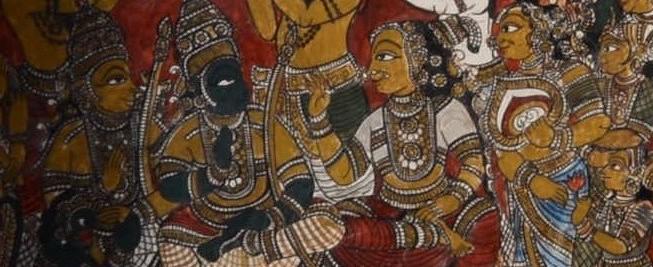We are a group of six scholars engaged in a long term project to produce a complete, scholarly, fully annotated literary English translation of the Tamil Rāmāyaṇa of Kampaṉ. The project is directed by Archana Venkatesan of UC Davis. David Shulman (Hebrew University) and Archana Venkatesan serve as the series editors.
This multi-volume translation is under contract with PenguinRandom House under their Vintage Classics imprint. We aim to publish the volumes sequentially, beginning with Volume 1 (Bāla: Youth) projected to be published in 2028 and concluding with Volume 7 (Yuddha: War-Part 2), projected to be published in January 2031. In addition, we are planning an introductory volume of essays by the translators.
About Kampaṉ's Rāmāyaṇa
The twelfth century Irāmāvatāram (The Descent as Rāma) is Kampaṉ’s retelling of the renowned, pan-Indian epic story about Prince Rāma, his chaste wife, Sītā, and his battle with the demon-king, Rāvaṇa, to retrieve his abducted wife. Although there was likely an earlier, now lost Tamil telling of the Rāmāyaṇa, Kampaṉ’s vivid poem, comprising six book and over 42,00 lines of verse, became the definitive version in the language, lauded as the Tamil literary tradition’s greatest poem and Kampaṉ its greatest poet. This well-deserved reputation derives from the poet’s innovative use of language, his radical reimagining of critical episodes in a familiar story, the psychological depth of his characters, and his consistent engagement with large themes, chief among them the precariousness of power, the relationship between truth and speech, and the nature of god. As one of the first devotional Rāmāyaṇas, Kampaṉ paved the way for later poets who too sought to recast its central characters—Rāma and Sītā—as gods in human form. However, unlike these later Rāmāyaṇas, Kampaṉ emphasizes the humanness of his characters, plumbing that very quality to create the dramatic and emotional tension that emerges from a man who is god but is forgetful of his own divinity. Finally, Kampaṉ composed his poem at the height of Cōḻa imperial power under the patronage of a vassal king, whom he mentions by name in every thousandth verse. Thus, the Irāmāvatāram, which is deeply concerned with power in all its guises—political, moral, sexual, and religious—offers us a window into distinctively South Indian conceptions of kingship, for instance through clever and insistent invocations of the dynasty’s cultic center and patron deity. For all these reasons, the Irāmāvatāram has proved enormously influential, traveling beyond the Tamil country into Kerala (where it is still enacted by traditional shadow puppeteers) and also beyond peninsular India into Southeast Asia, inflecting the versions of the tale across the region. Similarly, South Indian sculptors and artists, particularly in the early modern period, found inspiration in Kampaṉ’s Tamil telling (of episodes such as the mutilation of Śūrpaṇakhā) rendering them in dramatic visual forms on temple walls.
Read the plot summary of Kampaṉ's Irāmāvatāram.
Read our translations excerpted from each of the six books of the Irāmāvatāram

